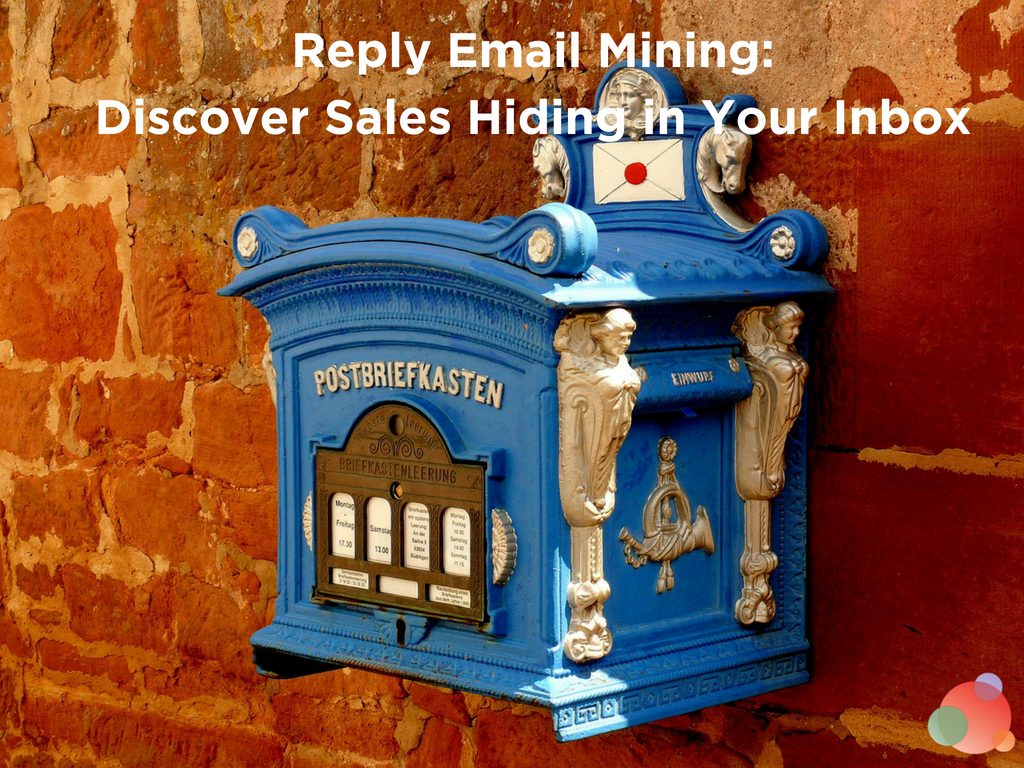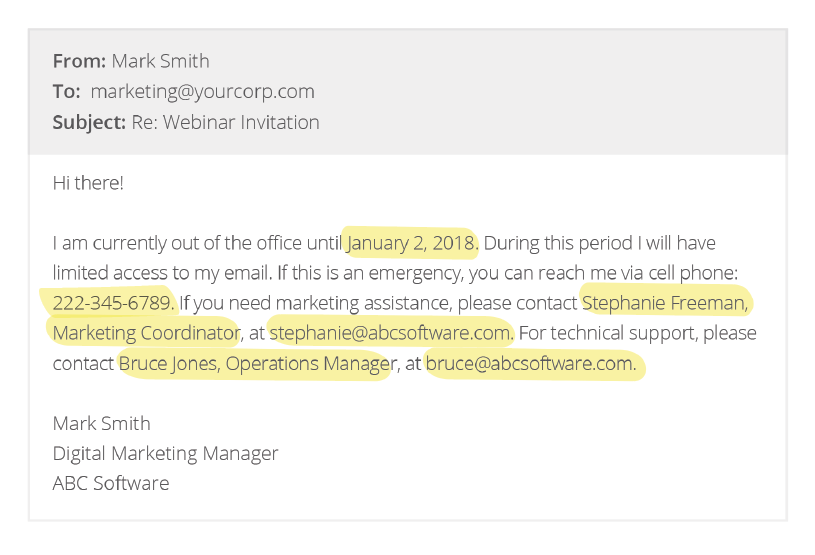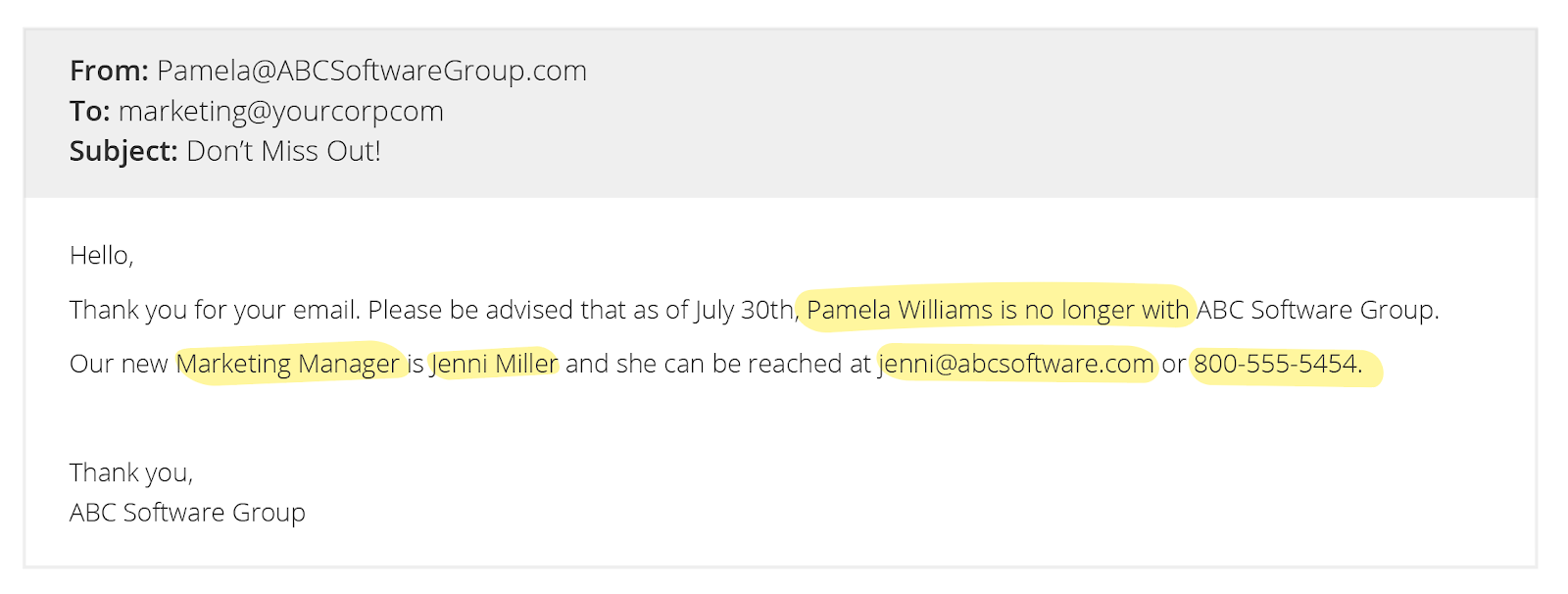 More than half of B2B marketers say email is their most effective channel in terms of revenue generation.
More than half of B2B marketers say email is their most effective channel in terms of revenue generation.
So it’s no surprise there is an entire sector around improving email effectiveness and ROI.
In fact, 49 percent of businesses use some form of email automation to enhance their strategy.
The marketing automation platform, Marketo, sent more than 30 billion emails on behalf of their customers last year. Offering further proof that automation is very, very useful.
Mining Reply Emails
Reply email mining is the process of extracting marketing and sales intelligence from email replies.
This strategy benefits any business using email marketing.
But, it works particularly well for B2Bs practicing account based marketing strategy, and those wanting to learn more about inbound leads.
Mining reply emails closes the loop on email automation. You’ll extract valuable intelligence about the leads and accounts your business is already engaging.
This data is then applied to automation platforms, so your team continues nurturing leads, penetrating target accounts, and ultimately closing more deals.
But let’s get back to those 30 billion emails sent (and that’s just in Marketo).
Account Based Intelligence
Every time you send an email campaign, it generates replies.
Think of the unassuming replies like out-of-office, left-the-company, other change notifications, and manual replies.
Research shows average email marketing campaigns have a two percent reply rate.
Looking at just the 30 billion number above, that’s 600,000,000 replies per year. Replies that usually get deleted!
Businesses either don’t know how valuable these replies are or simply don’t have the resources to analyze and mine the replies manually.
But that’s a huge mistake.
Buried in the unstructured body of reply emails is a wealth of account based intelligence.
Ignoring them could mean leaving countless deals—and dollars—on the table.
Just what kind of intelligence are we talking about here?
Let’s dig in.
Examples Of Reply Emails
First things first, it’s important to understand the anatomy of a reply email. More specifically, what type of information you’ll find in one.
Let’s take a look at two popular types: out-of-office and left-the-company.

From this Out-Of-Office, you learn:
- Mark is out of the office
- When Mark will return
- Mark’s title
- Mark’s cell phone number
- Stephanie’s title and email
- Bruce’s title and email

From this left-the-company reply, you learn:
Existing Lead (Pamela):
- Pamela is no longer with the company
- Her last day was July 30th
- Your new contact is Jenni
New Contact (Jenni):
- Jenni is your replacement contact
- Title
- Phone number
Your mind is probably off to the races before we even dig into how to leverage this information.
Leveraging Out of Office Intelligence
Now let’s take a look at how to leverage this same information from an operational, tactical, and strategic standpoint.
Out-of-office intelligence:
- Joe is out of the office
- Joe’s title
- Joe’s cell phone number
- Sally’s title and email
- Bruce’s title and email
Operational:
- Update your database. If you only had Joe’s email before, say as a result of an inbound campaign, now you have his title and his cell phone number. This information is pure gold to your sales team, especially if Joe is a hot lead.
- Add new contacts. Add Sally and Bruce’s contact information to your database.
Tactical:
- Expand your reach into the account. According to Gartner, it now takes as many as seven people within an organization to make a B2B buying decision. You now have two additional contacts, Sally and Bruce.
- Stay compliant with email spam laws. Ensure you are compliant with CAN-SPAM, CASL, and GDPR by always practicing permission-based marketing by reaching out to new contacts, making your intentions clear, and asking them to opt-in to future communication from you.
Strategic:
- Increase connect rates. Out of office emails have historically been considered nuisance replies. But the dates your leads are in and out of the office can help move deals across the finish line faster. Worse case scenario, you delete the out-of-office and do not leverage the information at all. Next best strategy, you resend your original campaign when the lead is back in the office. Winner-winner-connect-rate-dinner? You schedule an email for when the lead is back, including a personal message about their [vacation, seminar, etc.] to build rapport and engage them in a meaningful conversation.
- Personalize your messaging. What else can you do with the information you learn about Joe? Use his title to identify his persona within the organization. And you can use it to effectively segment him into the appropriate mailing list and send him personalized content. For example, he was receiving your general newsletter. But you found out he’s a manager, so now you can tailor your messaging. He’ll receive tips and best practices to optimize performance and productivity.
Leveraging Left the Company Intelligence
Left the company intelligence:
Existing Lead (Pamela):
- Pamela is no longer with the company
- Her last day was July 30th
- Your new contact is Jenni
New Contact (Jenni):
- Jenni is your replacement contact
- Title
- Phone number
- Email address
Operational:
- Update your database. Remove Pamela from your database and mailing lists.
- Add new contacts. Add Jenni and her contact information to your database and alert the lead owner or applicable sales and marketing associates that Jenni is the new contact, replacing Pamela.
Tactical:
- Overcome opportunity blockers. Perhaps it was a struggle to get Pamela on board. Or worse, she kept you from reaching key decision makers. But now you have a brand new lead with fresh perspective who may be more receptive. As a bonus, if you get Jenni on board, and she is enthusiastic, she can help recruit more influencers to your side.
- Stay compliant with email spam laws. Use permission-based marketing to get Jenni to opt-in to ensure you stay compliant with CAN-SPAM, CASL, and GDPR.
Strategic:
- Secure renewals. If business depends on renewals, it’s important to connect with your new contact (Jenni) ASAP. Ask if the company is satisfied and plans to renew.
- Upsell and cross-sell. Getting in with a new contact can open opportunities within other parts of your accounts to upsell and cross-sell.
- Identify new customers. If you and Pamela have a good relationship, follow her to her next company and see if it fits your ideal customer profile. Uncover additional sales opportunities by following the movement of everyone involved in a left the company. You’ll be the first to win the deal 74 percent of the time.
Opportunities are Sitting in Your Inbox
Literally!
Think of how many out of office and left the company replies you’ve seen throughout the years. How have you been leveraging them?
For many businesses, it simply wasn’t a priority, or it was too time-consuming to pay attention to reply emails.
Now, we know how valuable these replies are, and how easy it is to access intelligence.
Which brings us back to the role of automation in today’s email marketing strategies.
Reply email mining services automatically analyze every reply that comes back from your email marketing and sales campaigns.
These services can effectively mine relevant intelligence, label actionable replies for further review, and even update your database.
More sales tech and martech solutions are integrating with popular platforms such as Marketo, Salesforce, and HubSpot.
And you can apply mined intelligence to custom programs and workflows to automate processes you’d handle manually.
For example, scheduling follow-up emails and phone calls and sending complimentary content.
The future is here.
Email mining is the last leg of automation we didn’t realize we needed, but now find impossible to live without.
So, how does your team leverage reply emails? Please share in the comments below.